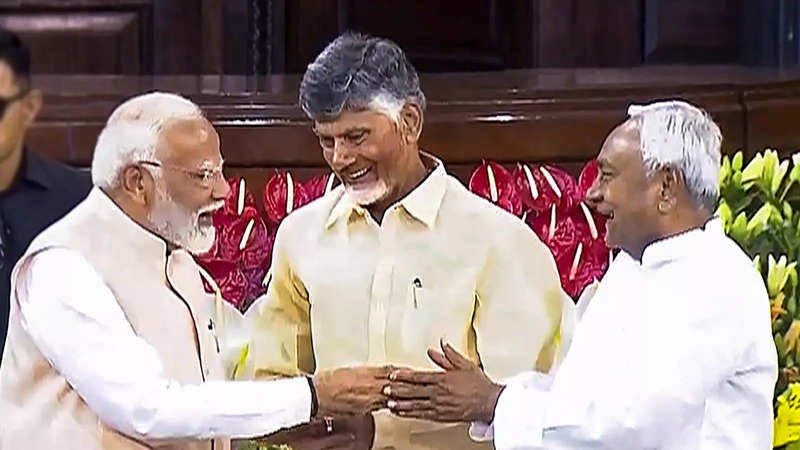Last week’s column exposing Medha Patkar’s claims on the Sardar Sarovar Dam drew responses like how dare you attack a great activist; large dams are bad; dam resettlement has a terrible history; tribals have been the biggest victims of displacement. Yet none could deny Medha’s falsehoods — that Narmada water would never reach arid Kutch and Rajasthan; high interest rates would bust the Gujarat government; the unique culture of tribals meant forced resettlement would get them into debt traps, they would lose their compensation land to loan sharks and become paupers in slums while their women would become prostitutes.
Medha’s admirers want me to focus on her fight for tribal rights, and forget these statements. Actually, she fought against the dam more than for tribal uplift.
When the Sardar Sarovar Dam went before a tribunal, the campaign for tribals rights was organised not just by Medha’s Narmada Bachao Andolan (NBA) but other NGOs like Action Research in Community Health and Development (ARCH).
NGOs said compensation must include land, and convinced the tribunal to award five acres per adult male displaced plus cash compensation. Gujarat government’s objections and obfuscation were countered by agitations and court petitions that ensured all tribals would get land and not be treated as encroachers.
Medha’s U-turn
Far from celebrating this victory, Medha made a U-turn and insisted on nevertheless halting the dam. She persuaded the World Bank’s Morse Commission to toe her line. She and global NGOs claimed that the tribals would rather drown where they lived than accept the compensation award. No, ARCH and others had convinced most tribals that the compensation package was a victory.
ARCH sought best implementation of the package. But the NBA kept trying to block this. The tribunal decreed that tribals would choose land for resettling with NGO help, and the state government would buy such land for the oustees. Medha said the Patels would never sell land. But ARCH, working with tribals who had worked in Patel farms for years, identified 7,000 acres available. Resettlement began, but NBA activists allegedly attacked tribals trying to shift their belongings but it didn’t work.
Maharashtra tribals displaced by the dam wanted to shift to nearby denuded forests. NBA insisted this was against their interests and they should be kept in the jungle. ARCH and many tribals were astounded that those claiming to promote tribal rights were now trying to deny them. Medha had persuaded city intellectuals that resettlement would be a disaster and became a national hero. But her attempts to sabotage the project failed.
The resettlement
All resettlement is traumatic. Initial studies showed that the tribals went through many travails. But were these transitory problems or structural ones, as the NBA claimed? As I wrote last week, a research study by Neeraj Kaushal and I found that resettled tribals were far better off on dozens of parameters than their former neighbours in the forest.
Did they lose their land and become paupers? No, 85% owned land (those under 18 years got no land compensation). With land prices touching Rs 30 lakh/ acre, thousands of 5-acre tribals had become crorepatis! A high proportion owned motorcycles (61%), cellphones (88%) bank accounts (95%), and TVs (46%). They had improved access to electricity (95%), running water (46%), schools (99%), and health centres (37%). They said they lived harmoniously with the Patels, had maintained their culture, and quickly learned to do irrigated agriculture.
Medha deserves kudos for her initial fight for tribal rights. But not for her subsequent U-turn. While claiming to be pro-tribal, she wanted to keep them without modern facilities in the jungle. In effect, she fought to prevent poor tribals from becoming land-owning crorepatis, with access to education. Was this pro-tribal or anti-tribal?
After the NBA failed to halt the project, it changed tack. It joined ARCH and others in trying to ensure good implementation of resettlement. This was an excellent shift.
Many disputes arose regarding compensation. During our research, 7% of cases were under dispute. Today the NBA focuses on these shortcomings and tells visitors the tribals have been treated dreadfully. But the NBA does not want to talk about thousands of tribals becoming crorepatis and more: that spoils their narrative of the oustees as victims. In fact, many oustees must now be viewed as big winners. That is how many view themselves. This holds lessons for resettlement in other dams.
The real hero of this story is ARCH. Hats off to its top stalwarts—Anil Patel, Ambrish Mehta and Trupti Parekh. Starting with community health, they have toiled selflessly for tribal uplift in several dimensions for decades without any publicity machine. They have not got the glory or awards showered on the NBA. They deserve better.
This article was originally published in The Times of India on September 11, 2022.





